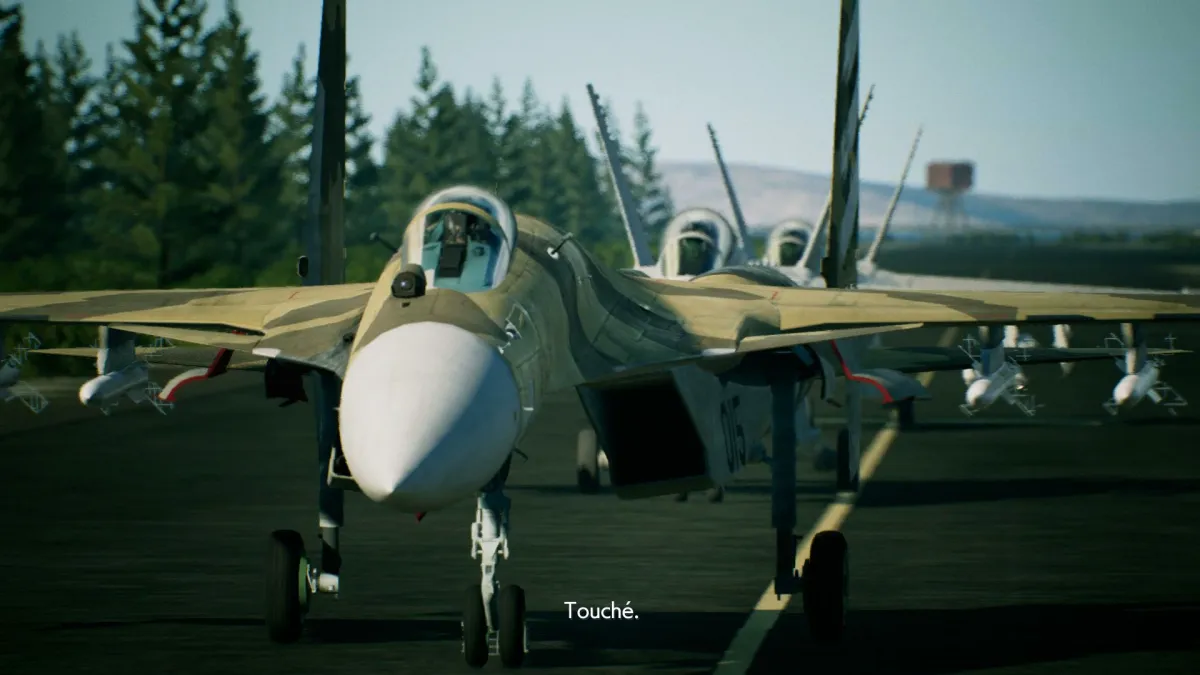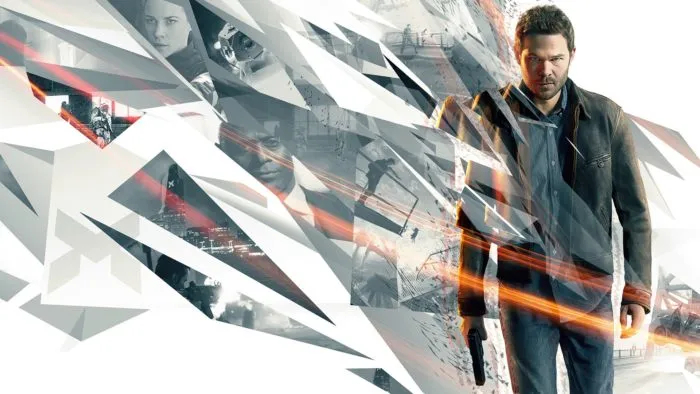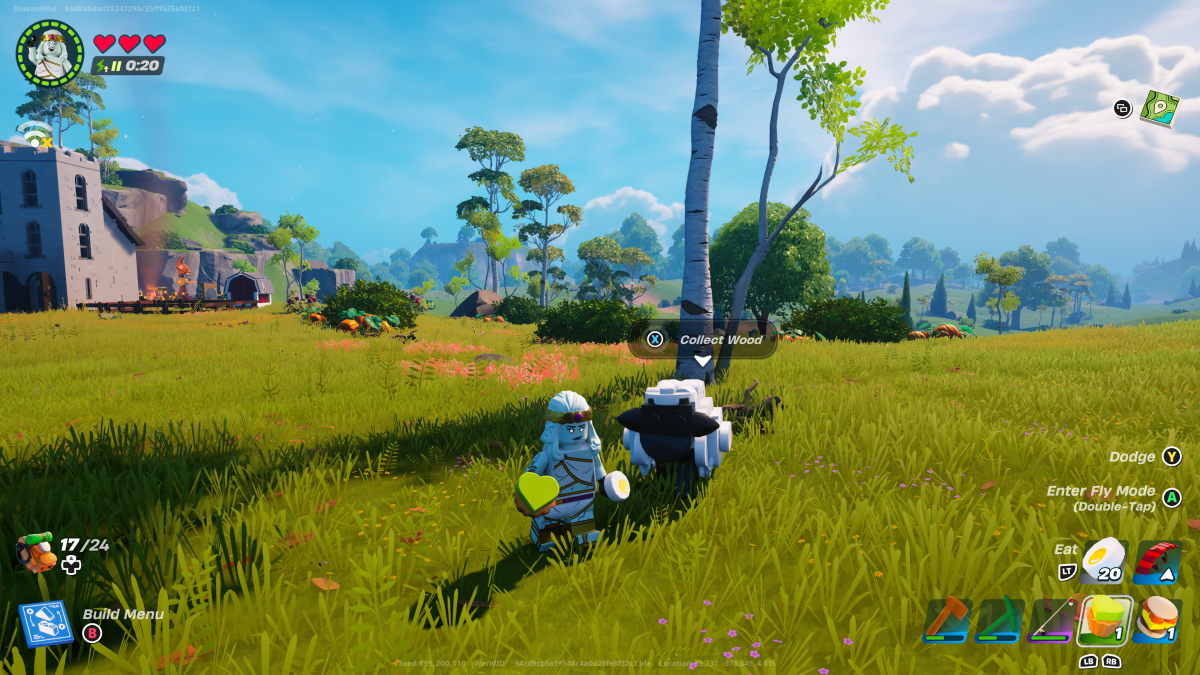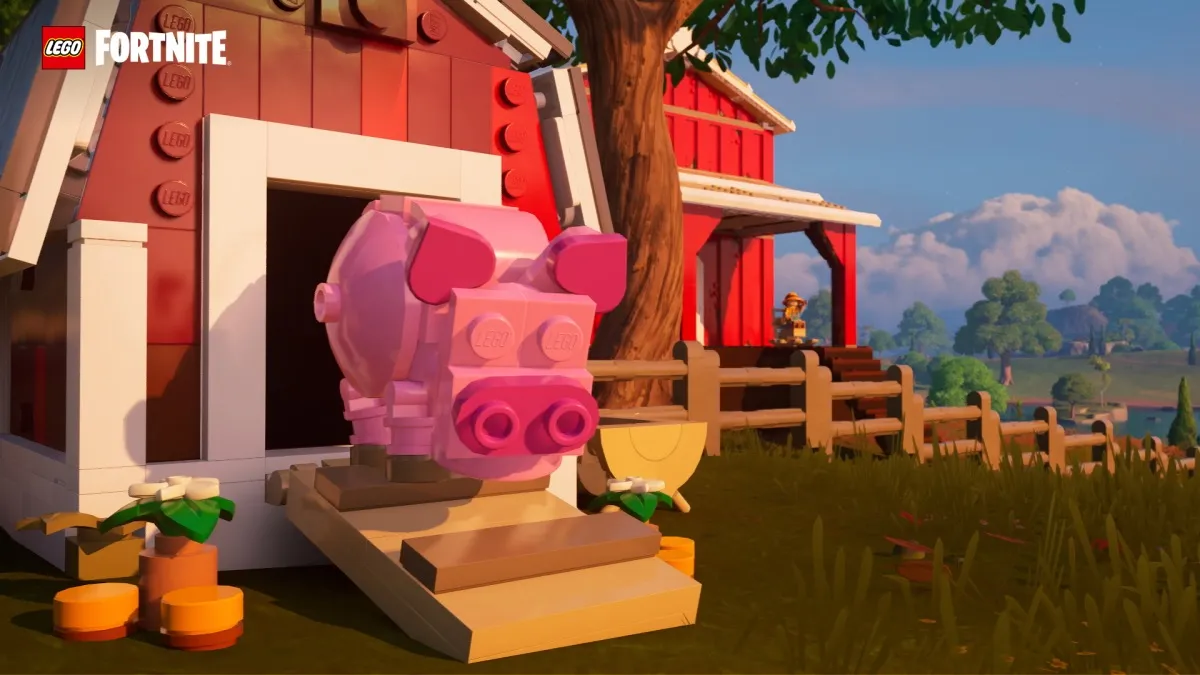Ace Combat 7: Skies Unknown on PlayStation 4
Seven years ago, Bandai Namco and Project Aces released Ace Combat: Assault Horizon. In the attempt to appeal to a wider crowd, they abandoned the beloved fictional world of Strangereal for the real world and tried to revolutionize the game’s formula.
It didn’t go down well, and many fans pretty much lost hope to ever see a true Ace Combat game ever again. The free to play, multiplayer-only Ace Combat Infinity in 2014 compounded that dreaded sensation. It wasn’t a bad game (while Assault Horizon certainly was), but the franchise is at its strongest within its immersive single-player campaigns.
And yet, at PlayStation Experience 2015, Bandai Namco announced Ace Combat 7 with trailer that made many of the old fans of the franchise smile. It took about 45 seconds of sitting on the edge of the chair to finally see what I was hoping: an F-22 Raptor dancing among the clouds proudly carried on its wings the roundel of the Osean Federation.
I clearly remember literally screaming in the microphone while furiously typing my news article. I knew we were finally going back to Strangereal.
This might appear a negligible detail to those who aren’t familiar with the franchise, but the setting is one of the catalysts of the greatness of the Ace Combat series. Strangereal is a world similar to ours, but it’s not our world. There are no tired and overdone conflicts between the United States and Russia, China, or some terrorist faction from the Middle East.
The fictional world allows the game’s development team to spread its wings and mix real modern jet fighters with secret weapons that could come straight from an anime series while writing stories that are in many ways more akin to a JRPG than to a grounded military game. It creates a charming concoction that is pretty unique to Ace Combat and that is back in full swing with Ace Combat 7: Skies Unknown.

Bandai Namco brought back together the team that worked on the arguably best games of the series, Ace Combat 04: Shattered Skies and Ace Combat 5: The Unsung War, and the result is really compelling.
In the main story, we play Trigger, a member of a penal squadron initially created as a decoy by using criminals to divert the attention of enemy forces. Our hero has been accused of an extremely heinous crime (which I won’t mention, because it would be a massive spoiler) and has fallen in disgrace.
In the backdrop, the Kingdom of Erusea has declared war to the Osean Federation, which has extended its economic and military tendrils a bit too far for the comfort of its neighbors. Yet, due to collateral damage inflicted on the civilians in the Erusean capital of Farbanti, public opinion starts to side with the apparent aggressors. The charisma of Erusea’s princess Rosa Cossette D’Elise only makes the situation worse for our hero’s faction.
This is one of the main themes of Ace Combat 7, which tells its story from the points of view of both nations at war, often in conflict. This provides a striking allegory of war, where “good” and “evil” are often just a matter of propaganda, and opposing sides may very well have compelling and relatable reasons and justifications for their actions.
While in today’s gaming scenario it’s very tempting for those who aren’t familiar with this franchise to just ignore the story and jump into multiplayer, I implore you not to do that. Ace Combat 7: Skies Unknown’s single-player campaign by Sunao Katabuchi deserves to be fully enjoyed, alongside its setting.

A wonderful complement to the storytelling is the score by Keiki Kobayashi, which brings back arrangements familiar to the fans of the series, alongside new ones that perfectly accompany our adventure, helping to stir an emotional involvement that many wouldn’t expect from a game that is essentially about aerial battles.
When in the opening cutscene Avril (another charming character who you’ll get deeply acquainted with) took off in her refurbished F-104 Starfighter and familiar notes started playing in a stirring crescendo, I admit that I teared up. The score does a fantastic job at amplifying such emotions throughout the whole game.
The game’s visuals have also made a massive jump from the old-generation. The level of detail poured in the aircraft is absolutely delightful, and it’s really exciting to see them in action in the sky, especially if you’re a fighter jet enthusiast like I am.
Speaking of the sky, the development team used trueSKY technology and a great implementation of the lighting engine to create a majestic display of clouds and sunlight, on top of plenty of weather effects that truly do justice to the elements in which we’ll find ourselves flying.
The one weak spot of the graphics is shared with previous entries of the franchise. Especially when we’re flying low over flat terrain, it tends to be affected by inconsistent definition due to the mix of ground textures generated from satellite imagery and 3D props like buildings and vegetation. It creates a look similar to a glorified Google Maps, and it doesn’t match the quality of the rest of the presentation.

That being said, this is probably justified by having to support basic PS4 and Xbox One, which aren’t exactly powerhouses anymore nowadays. Considering where the player’s eye tends to mostly focus, the choice of focusing most of the hardware juice in rendering the aircraft and the sky is likely a sound one, and the flaws are difficult to spot while you’re flying and dogfighting.
Of course, the gameplay is what makes or breaks this kind of game. Let’s get a very important detail out of the way: at the very beginning, you’re asked whether you want to use “Standard” or “Expert” controls.
This labeling is misleading because “Expert” controls give you the freedom to pilot your aircraft pretty much however you like, while “Standard” controls should probably be renamed “I can’t fly a potato, so I need the game to hold my hand really tight. I’m gonna crash for sure if it lets me fly inverted.”
Basically, playing the game with Standard controls clamps your ability to fly the plane naturally in a draconian way, and siphons a large part of the fun out of the experience. Granted, making giant mistakes is less likely, but your freedom of maneuvering is so restricted that you’ll likely find yourself crashing simply because the “Standard” hand-holding hinders you more than it helps.
On the other hand, “Expert” controls aren’t all that difficult to come to terms with. This isn’t a full-fledged simulator and the flight model is simple enough that pretty much everyone can easily handle the game’s renditions of fighter jets.
Even if you’re a novice to the series, I wholeheartedly advise forgetting that standard controls exist and just going with Expert from the very start. Not only you’ll become better quicker (or at all, because standard controls actually hinder your learning), but you’ll have a ton more fun.

While the flight model is simple enough to be approachable by pretty much anyone, it’s also very engaging and rewarding. It does come with a small degree of challenge which can punish you if you don’t respect the fact that you’re piloting a fighter jet and not a skateboard, but pulling advanced maneuvers that you see in movies and anime is intuitive and satisfying.
Actually, it’s so intuitive and well-balanced that you may not even notice it while you’re flying. Yet, when you finish a mission and you watch the replay, you’ll often find yourself wondering “Did I really do that?” As a matter of fact, this left me wishing that the developers at Project Aces actually implemented a proper and full-fledged photo mode.
Weather isn’t just cosmetic and deeply influences flying, adding another layer of depth and challenge to the game. Ace Combat 7 implements features which other titles simply include because they’re pretty, and turns them into actual gameplay elements that increase tension and immersion. Try getting hit by lightning, and you’ll know what I mean.
The campaign offers a well-rounded variety of missions which go from the simple fighter sweep to film-like scenarios that I won’t spoil, but that are intensely satisfying and engaging when you play them. Each mission normally comes with a second half that deviates from the original objectives offering further variety and excitement.
Named aces also make a comeback to make things more interesting, and if you manage to shoot them down, you’ll be rewarded with a brand new skin for your own planes.

Speaking of skins, there is a ton of customization available in Ace Combat 7. Not only you can enjoy a wide range of aircraft featuring many nationalities and flavors, but you can also personalize them deeply in their performance thanks to a massive number of parts that can be unlocked by spending points earned both in single player and multiplayer.
This is, indeed, one of the most charming aspects of the game. Whether you’re in the mood for the campaign or to fight against other players, all activities are equally rewarding and contribute to your progression.
If you’re Stuck on a difficult engagement, you can temporarily drop it and go shoot down some people in multiplayer, earn some new parts, and then retry with a better aircraft under your butt.
Since I mentioned multiplayer, I’m pleased to mention that it’s a whole lot of fun. It’s admittedly rather simple, including only the team deathmatch and battle royale modes which respectively split the players into two rival squadrons, or pitch them against everyone else in a free-for-all environment.
That being said, complexity can be unnecessary when flying and fighting themselves are so fun. Matches are fast and furious, and they can really be addictive also thanks to the many unlockables that give you a sense of purpose and progression. While in the Ace Combat series single-player is absolutely king for me, I found myself enjoying team deathmatch much more than I expected.

While the modes themselves are not incredibly deep (if you don’t consider the nuances of dogfighting, which are deeper than anything a first or third-person shooter could ever provide), they do exactly what they need to keep the player engaged. Yet, there is a lot of room for expansion and improvement here. Hopefully, Bandai Namco will give this area of the game some more love down the line.
Ultimately, flying is so much a pleasure in Ace Combat 7 that at times I find myself simply enjoying the free flight mode that lets me drop into a map with an aircraft of my choice to dance alone into the sky or to see how low and fast I can fly into a canyon full of obstacles. It’s delightful and empowering.
Ace Combat 7: Skies Unknown finally fulfills the expectations of those players from my generation who loved Ace Combat 04 and 5, bringing the series back to its roots in a masterful way. While there are a few relevant innovations, the good folks at Project Aces kept their eyes and ears open and listened to the fans of the franchise who wanted to return to Strangereal and to the Ace Combat that we know and love.
And indeed we’re back, and it feels great.
Score: 4.5/5 – Great
For more information on how we review games, check out Twinfinite’s review policy here.




